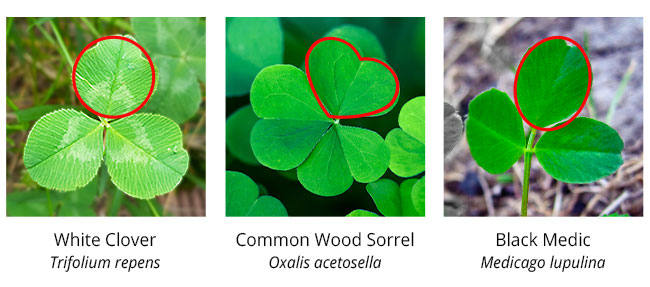How to Identify Oxalis or Wood Sorrel

Oxalis, a type of wood sorrel, is a short annual weed that grows low to the ground, and can resemble some varieties of clover or shamrock. Some varieties of oxalis are considered invasive, especially yellow wood sorrel (Oxalis stricta), which can be found across most of the eastern United States.
Yellow woodsorrel is an especially fast-growing and aggressive weed. It can spread and persist in soils that are not rich in nutrients, giving it an advantage over other plants in the area. Learn how to identify this and other oxalis weeds with this guide, then learn how to control oxalis in your lawn.
Appearance

- Is a short, annual weed that flowers in the summer
- Weak stems branch out from the base
- Produces yellow, white, or pink flowers with five petals each
- Leaves have three smooth-edged, heart-shaped, 1/2-inch-wide leaflets each
- Has a taproot from which rhizomes grow to spread more plants
- Produces huge numbers of seeds per plant, and germinates nearly 100% of the time
- Spreads seeds with seed capsules which burst open, sending seeds as far as 16 feet away
Common oxalis/wood sorrel (Oxalis acetocella) leaves are heart-shaped and can be confused with other weeds including the more circular leaves of clover (Trifolium repens) and the oval-shaped leaves of black medic (Medicago lupulina). Note the differences in leaf shapes shown below while identifying weeds on your property.

Larger varieties of oxalis exist. The best known is Oxalis triangularis, or false shamrock, which produces fan-shaped, dark purple leaves. These plants are often grown as an outdoor ornamental plant or as an indoor potted plant. This guide addresses control of other varieties that appear as weeds.



